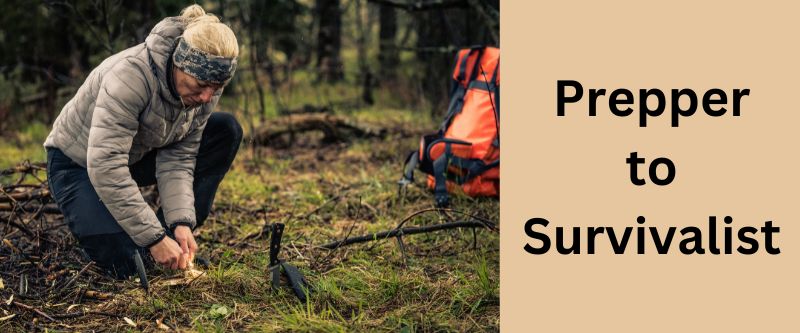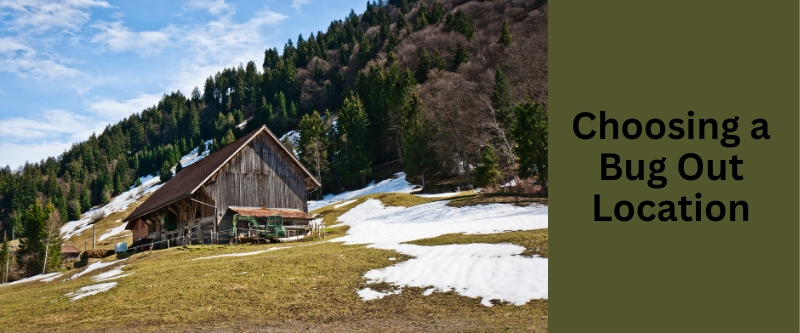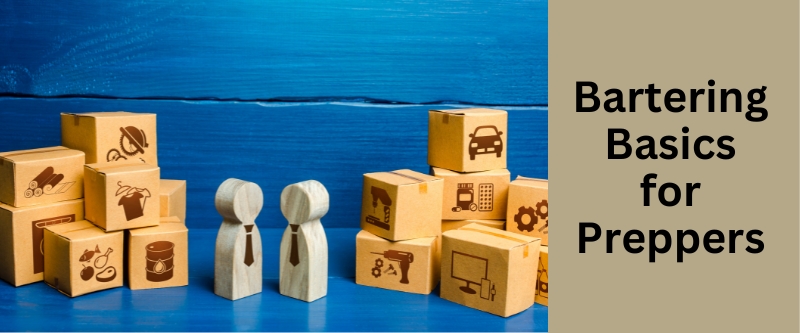Table of Contents
Prepper to Survivalist – A Progression
This is the first post to be published on this site and gives context and an insight into our general approach to prepping and survival.
There is some justified head-scratching about whether a prepper and a survivalist are the same. However, while both focus on surviving natural disasters and threats, they differ in several ways.
So we’ll touch on the differences and similarities between the prepper and the survivalist and then define the approach of this website.
Similar Goals
Both survivalists and preppers aim to navigate through societal collapses and emergencies. Survivalists hone essential survival skills to be ready for such events, while preppers accumulate resources for survival.
Common Values
They share core values such as a determination to survive such threats as simple emergencies (like extended power outages), natural disasters, civil unrest, and wars. They opt for self-reliance instead of depending solely on authorities or institutions for assistance.
They worry that these very authorities and institutions will likely be overwhelmed by a disaster (especially law enforcement) and may even be hostile.
Different Approaches
Despite seeming similar, preppers and survivalists prepare differently. Preppers stockpile supplies, emphasizing material readiness. They invest more money and gather non-perishable foods, tools, and resources to endure extended periods within their homes. Some even establish homes in remote locations for survival.
Survivalists, however, focus on utilizing their skills and surroundings. They depend on resourcefulness, growing food, hunting, and living off the land. They favor a minimalist approach.
Preference for Community or Going It Alone
Preppers often value collaboration and plan with others, emphasizing strength in numbers. On the other hand, survivalists lean towards total self-sufficiency and are more inclined to operate independently. They often prefer less populated areas and prioritize self-reliance.
Lifeline vs Lifestyle
Preppers accumulate supplies to weather difficulties, hoping for normalcy to return. Survivalists employ survival skills daily, avoiding dependency on others. Survivalism becomes a way of life for them.
In other words, prepping is an insurance policy. Survivalism is a lifestyle.
The Approach of this Website
We acknowledge the general distinction between preppers and survivalilsts. And there is, of course, a commonality of purpose. But there is a major element missing from the conventional thinking.
In practical terms, there is a definite continuum or progression from prepping to survival. In our opinion, survival mode kicks in when all one’s prepping is exhausted.
Just to make the point, only an eccentric is going to head out into the wilderness in survival mode just because the power went out. And only an eccentric is going to be living in the wild in the first place.
This is not a knock on the dedicated survivalist, but it is the reality for most people and their families. This is especially so when young children and the elderly are involved. In other words, most people start as preppers.
The Continuum: Prepping to Survivalism
The relationship between prepping and survivalism can be seen as both a continuum and an area of overlap. This is what we mean:
- Initial Phase (Prepping Focus): At the beginning of this continuum, individuals are focused on preparing for specific, often short-term disruptions. This might involve stockpiling food, water, and medical supplies, creating an emergency plan for natural disasters, or setting up alternative power sources for potential outages. The goal here is to maintain a semblance of normalcy during a crisis, ensuring safety and comfort for a set period of time.
- Intermediate Phase (Overlap): As one moves along the continuum, the preparations become more extensive and long-term. Here, individuals are not only preparing for specific events but are also acquiring skills and resources that will help them be more self-sufficient over an extended period. This might involve learning how to grow and preserve food, basic medical training, or developing skills like hunting or foraging. In this phase, the lines between prepping and survivalism start to blur, as individuals are preparing not just to weather a storm, but to adapt to a new way of life if necessary.
- Advanced Phase (Survivalist Focus): At the far end of the continuum, individuals are preparing for long-term, significant changes to their way of life. This could be due to a societal collapse, long-term natural disaster, or other severe, enduring disruptions. In this phase, the focus is on self-sufficiency and adaptability. Individuals are prepared to live off the land, defend themselves if necessary, and survive without any of the conveniences of modern society. Here, the mindset shifts from preparing for a return to normalcy to preparing for a new normal altogether.
The Overlap: Comprehensive Preparedness
- Holistic Approach: For many, prepping and survivalism are two sides of the same coin. Thorough prepping involves not just stockpiling resources, but also developing the skills and mindset needed to use those resources effectively and to adapt when they run out. For example, a prepper might stockpile seeds and gardening supplies, not just canned goods. This prepares them to transition from relying on stored food to growing their own, a key survivalist skill.
- Mindset and Lifestyle: Both preppers and survivalists value self-reliance, foresight, and adaptability. For many, this isn’t just about preparing for specific scenarios; it’s a lifestyle that prioritizes independence, continuous learning, and a deep connection with the basic necessities of life. In this sense, prepping and survivalism are part of a holistic approach to life that values self-sufficiency and resilience at its core.
In summary, while prepping often starts as a way to prepare for specific, more immediate scenarios, it can evolve into a broader lifestyle that encompasses survivalist principles. Conversely, survivalists, while focused on long-term self-sufficiency, will likely engage in what can be considered prepping activities as part of their broader strategy for resilience and independence.
Conclusion
One preps to maintain a civilized life for as long as possible. When that is no longer possible, one takes steps to survive. So proper prepping does include being prepared to take the eventual step of becoming a survivalist, if necessary. So, in that sense, there is no difference between the prepper and the survivalist. The difference is without a distinction. It is all a matter of practicality in the progression from one circumstance to another.
Purpose of this Site
So our purpose here is threefold:
- To focus on prepping and its commonalities with survival
- To keep it simple, hence our website address: SurvivalPrepper101. Simple things get done, leaving you prepared. The complex gets postponed, leaving you vulnerable.
- To bring you resources to help you succeed
For more context, please visit our About Us page.





Leave a Reply